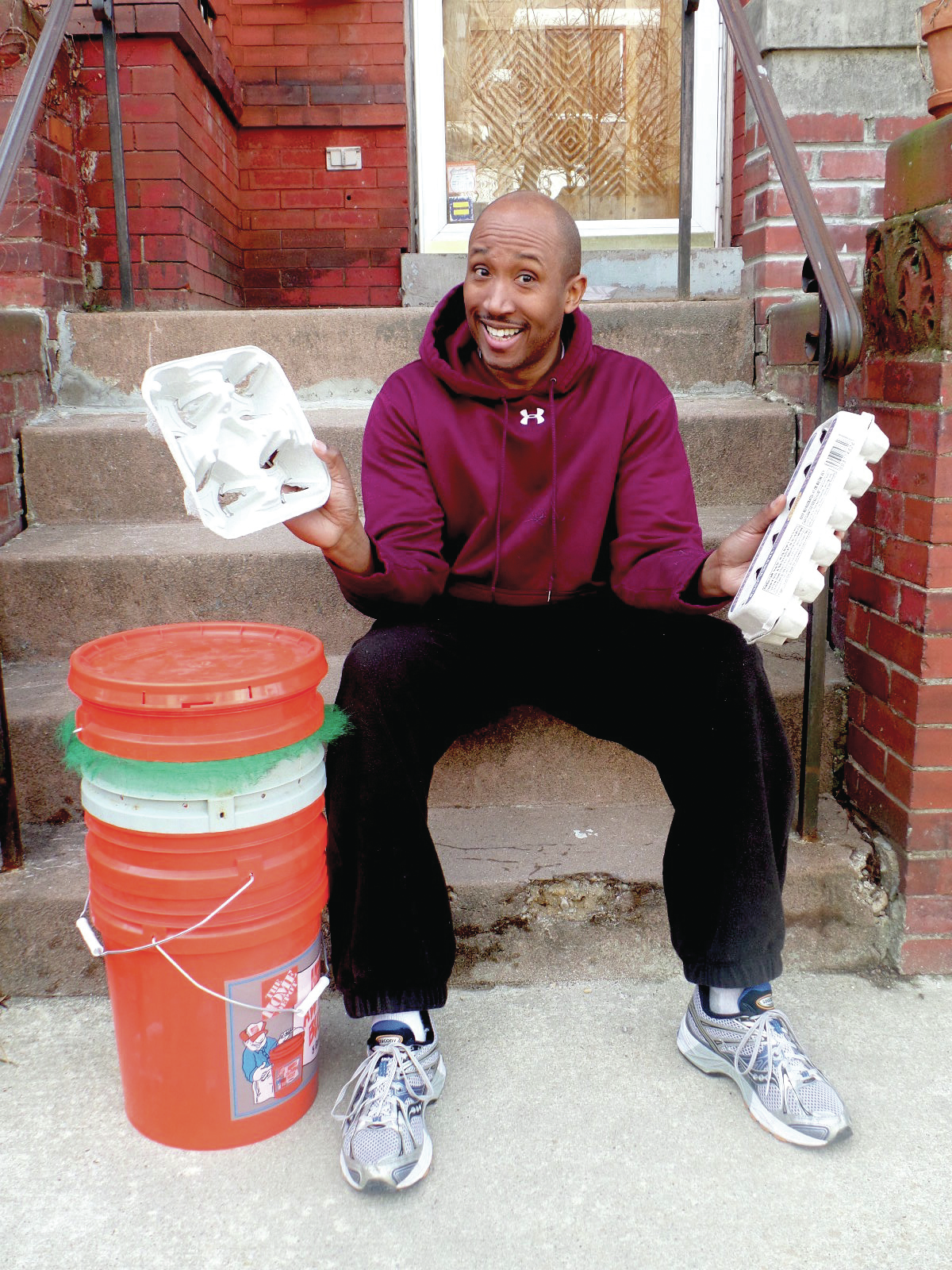Worm Composting: Small Footprint, Large Payback
/Words and photos by Susan Able | EdibleDC
Anthony Wallace got tired of throwing food away. Wallace, a management consultant and D.C. apartment dweller, realized that at the end of the week he had too much produce that had gone bad—and he felt bad about that. He describes red worm composting, or “vermicomposting,” as the perfect marriage of his love for digging into new hobbies and his environmental consciousness.
Internet research revealed a deep knowledge base with instructional videos that Wallace used to launch his own composting program. He started by selecting containers for the composting infrastructure, knowing the worms needed large enough containers to do their work and something opaque because they are light sensitive. Purchasing five-gallon paint buckets at Home Depot, Wallace then drilled tiny 1/16-inch holes into the bottoms to provide air, although he points out plastic tubs would work as well—they just need to have a tight-fitting lid.
Next, he ordered his worms from, yes, Amazon.com, starting with 250 red wiggler worms, a number he chose based on the size of the buckets and because worms are prolific breeders, doubling their population in 60–90 days. So, in addition to giving nutrient-rich compost to his gardening friends, he will also have starter worm populations to share.
“Those worms love apples—you should see them rip through the cores,” Wallace said as he showed how he turns and aerates the compost every 30 days. Wallace follows standard composting guidelines and composts produce (with the exception of citrus), coffee grounds, tea bags, some paper products and eggshells. Eggshells provide calcium for the compost. He does not put any dairy or meat in the mix.
Is there a smell? Not at all. Just the smell of dark, rich dirt. Fruit flies or bugs? Not a problem, Wallace fitted the top of his lid with a filter that keeps insects out or in.
Total investment? Wallace said he spent around $25 on the whole setup.
The payback? “This project has totally changed my outlook on food waste. Composting as a deliberate process makes you very aware of what you are throwing away and what you are wasting. I’m much more focused when I grocery shop on what I will really eat and what can be composted instead of just become garbage.”
Next DIY project? Wallace grinned: “Apartment aquaponics!”
Susan Able is the Publisher of @edible_dc and writes about food, makers and sustainability. Pictured here with Chef Jeremy Hoffman of @preserveeats in Annapolis, a restaurant that sources only local farm foods for its menu. On intagram @susieqable







